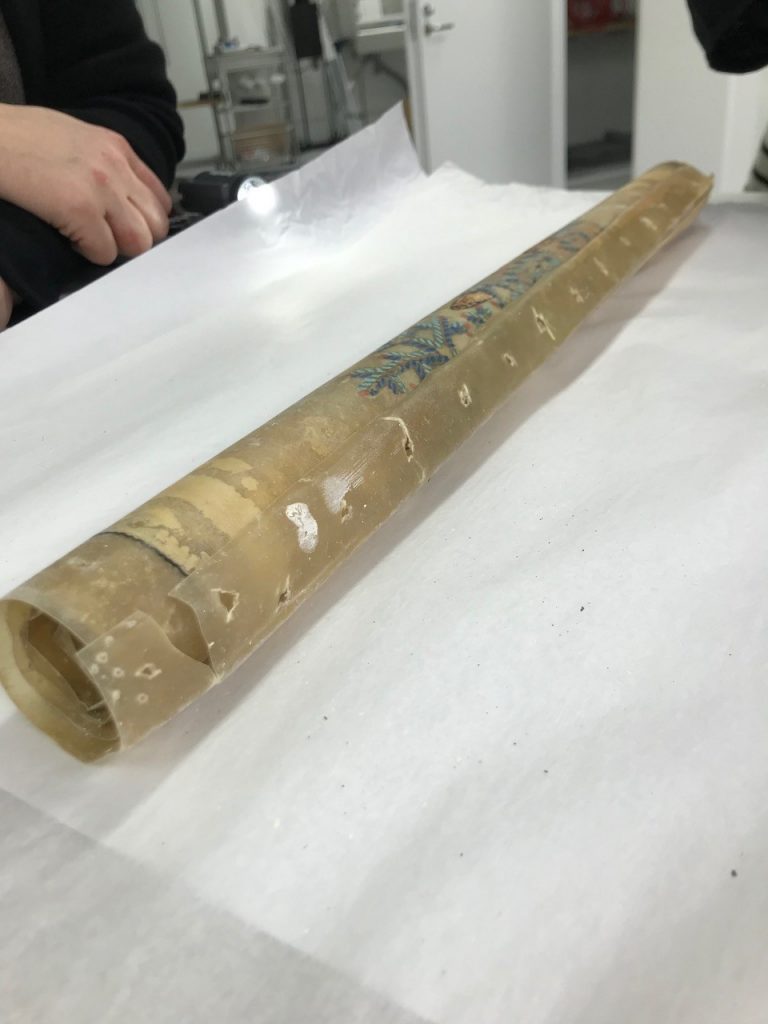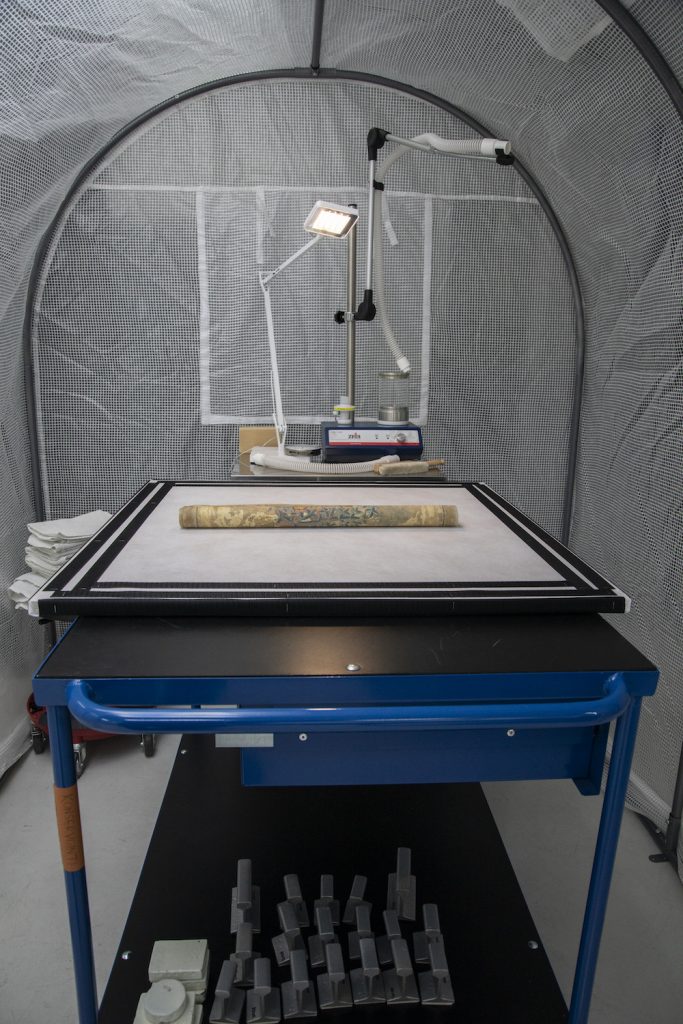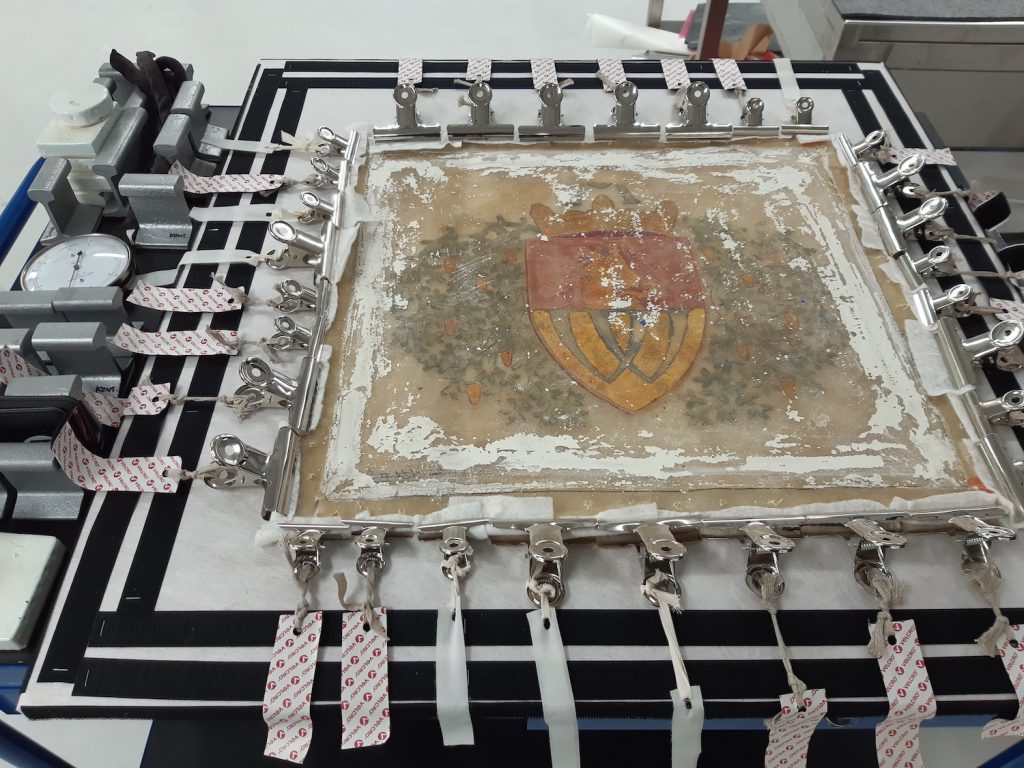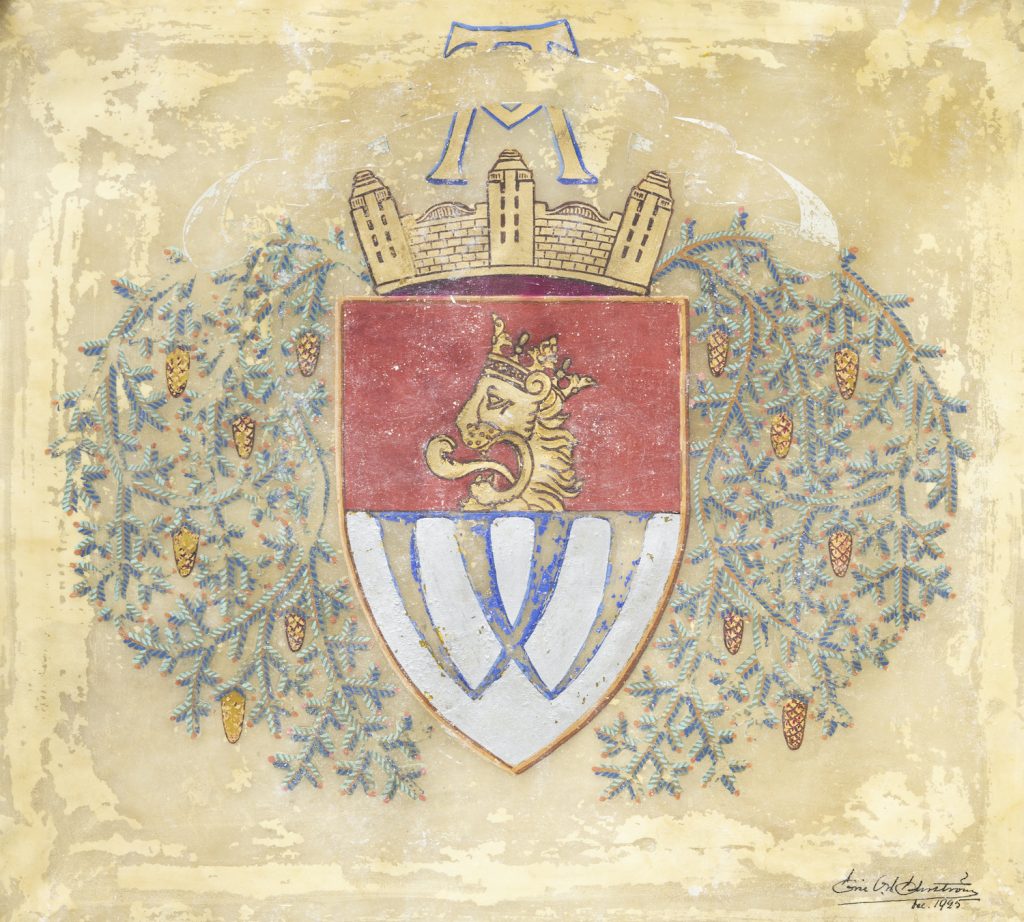A Mystical parchment roll in the Ehrström Collection
MARCH 2021
In connection with the exhibition Olli and Bucklan – Life and Art of the Ehrströms, among the Serlachius Museums’ treasures, a mystical, tightly wrapped roll was found, from which, to the dread of a known gentle operator, crumbs of pigment were spinkling out. Its content was a mystery. An old dust cover wrapped around the roll was the only clue pointing to Ehrström’s production. The exceptional character of the material – parchment – and its timely connection to Ehrström prompted to solve the mystery.
Parchment is an interesting material which is known to few these days. One often mixes it with papyrus. In Europe, parchment made from calf, sheep or goat skin was for one Millennium the primary writing base which was gradually replaced by paper as printing became more common in the turn of the 16th century. During the last five hundred years, use of parchment has been reduced to the most important ceremonial documents.
The examination of parchment roll belonging to the Ehrström Collection begun in December 2020. A dense greenhouse made of plastic was erected in the conservation spaces at Serlachius Museum Gösta. The purpose was to help parchment “relax” and straighten out to is original state by smoothly increasing the relative air humidity inside the greenhouse. Due to the detaching pigment layer, one did not dare to have any high hopes. If the mystery object could not be brought into a form where it could be presented in front of the public, just a brief moment would suffice for it to be documented into a digital form.
As the air humidity gradually increased, things started to happen in the greenhouse. Attached to a custom-made stretching frame by its only available edge, the roll started parsimoniously to buckle. As the roll opened up, metal jaw clips were pinched around its edges to induce the parchment to cooperate. Gratifyingly, also the painted surface seemed to stay compliantly attached to its base, after all. The work could be opened in its entirety after four hours but still the roll kept its secret. This was due to the fact that the image surface opened downwards towards the stretching board and during the operation one could only see it through the leather as a blurry image.
When the parchment was straightened as straight as possible, the level of the air humidity was decreased back to its initial state during the next 24 hours. The leather was kept stretched so that it would assume its flat form. In anticipation, the jaw clips fell open the next day and the parchment was carefully turned around and slipped under a weight for several months’ time to continue its straightening treatment. Fortunately, museum’s brisk photographer could come and document the result of the process during that ephemeral moment.
In the end, from the roll emerged mthe coat of arms created by Eric O. W. Ehrström for A. Ahlström Ltd in 1925. Before, few sketches implemented in pencil and ink had existed of the theme. The colours of the coat of arms are magnificent, and it contains elements typical for Ehrström: The lion of Finland, a modification of a mural crown, conifer branch decoration and a stylized letter W. Above the mural crown stood the year 1819. The use of the lion of Finland in a company logo has been questionable, although it has probably been used as a means to accentuate the company which had recently introduced Europe’s largest paper machine.
In the spring, the work of the conservators will continue in pigment fixing. The aim is also to find a proper way to frame the work so that Eric O. W. Ehrström’s work can be exhibited in a safe way.
Anna Aaltonen
Paper Conservator





